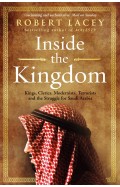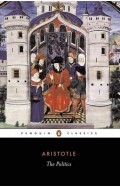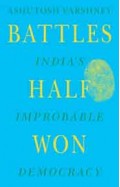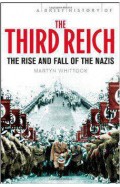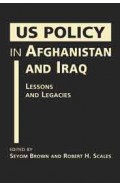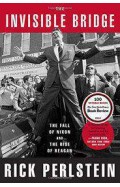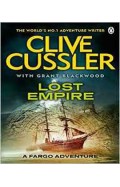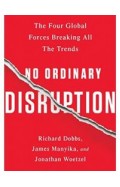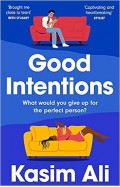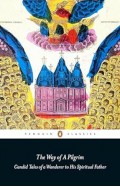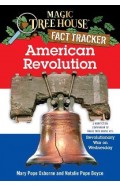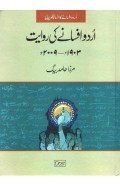- Home
- Categories
- Non Fiction
- History
- Political
- The Narrow Corridor - States, Societies, and the Fate of Liberty
The Narrow Corridor - States, Societies, and the Fate of Liberty
By: Daron Acemoglu
-
Rs 3,415.50
- Rs 3,795.00
- 10%
You save Rs 379.50.
Due to constant currency fluctuation, prices are subject to change with or without notice.
From the authors of the international bestseller Why Nations Fail, a crucial new big-picture framework that answers the question of how liberty flourishes in some states but falls to authoritarianism or anarchy in others--and explains how it can continue to thrive despite new threats.
In Why Nations Fail, Daron Acemoglu and James A. Robinson argued that countries rise and fall based not on culture, geography, or chance, but on the power of their institutions. In their new book, they build a new theory about liberty and how to achieve it, drawing a wealth of evidence from both current affairs and disparate threads of world history.
Liberty is hardly the natural order of things. In most places and at most times, the strong have dominated the weak and human freedom has been quashed by force or by customs and norms. Either states have been too weak to protect individuals from these threats, or states have been too strong for people to protect themselves from despotism. Liberty emerges only when a delicate and precarious balance is struck between state and society.
There is a Western myth that political liberty is a durable construct, arrived at by a process of enlightenment. This static view is a fantasy, the authors argue. In reality, the corridor to liberty is narrow and stays open only via a fundamental and incessant struggle between state and society: The authors look to the American Civil Rights Movement, Europe's early and recent history, the Zapotec civilization circa 500 BCE, and Lagos's efforts to uproot corruption and institute government accountability to illustrate what it takes to get and stay in the corridor. But they also examine Chinese imperial history, colonialism in the Pacific, India's caste system, Saudi Arabia's suffocating cage of norms, and the "Paper Leviathan" of many Latin American and African nations to show how countries can drift away from it, and explain the feedback loops that make liberty harder to achieve.
Today we are in the midst of a time of wrenching destabilization. We need liberty more than ever, and yet the corridor to liberty is becoming narrower and more treacherous. The danger on the horizon is not just the loss of our political freedom, however grim that is in itself; it is also the disintegration of the prosperity and safety that critically depend on liberty. The opposite of the corridor of liberty is the road to ruin.
From the authors of the international bestseller Why Nations Fail, a crucial new big-picture framework that answers the question of how liberty flourishes in some states but falls to authoritarianism or anarchy in others--and explains how it can continue to thrive despite new threats.
In Why Nations Fail, Daron Acemoglu and James A. Robinson argued that countries rise and fall based not on culture, geography, or chance, but on the power of their institutions. In their new book, they build a new theory about liberty and how to achieve it, drawing a wealth of evidence from both current affairs and disparate threads of world history.
Liberty is hardly the natural order of things. In most places and at most times, the strong have dominated the weak and human freedom has been quashed by force or by customs and norms. Either states have been too weak to protect individuals from these threats, or states have been too strong for people to protect themselves from despotism. Liberty emerges only when a delicate and precarious balance is struck between state and society.
There is a Western myth that political liberty is a durable construct, arrived at by a process of enlightenment. This static view is a fantasy, the authors argue. In reality, the corridor to liberty is narrow and stays open only via a fundamental and incessant struggle between state and society: The authors look to the American Civil Rights Movement, Europe's early and recent history, the Zapotec civilization circa 500 BCE, and Lagos's efforts to uproot corruption and institute government accountability to illustrate what it takes to get and stay in the corridor. But they also examine Chinese imperial history, colonialism in the Pacific, India's caste system, Saudi Arabia's suffocating cage of norms, and the "Paper Leviathan" of many Latin American and African nations to show how countries can drift away from it, and explain the feedback loops that make liberty harder to achieve.
Today we are in the midst of a time of wrenching destabilization. We need liberty more than ever, and yet the corridor to liberty is becoming narrower and more treacherous. The danger on the horizon is not just the loss of our political freedom, however grim that is in itself; it is also the disintegration of the prosperity and safety that critically depend on liberty. The opposite of the corridor of liberty is the road to ruin.
The Narrow Corridor : How Nations Struggle for Liberty
By: Daron Acemoglu
Rs 2,460.75 Rs 2,895.00 Ex Tax :Rs 2,460.75
The Narrow Corridor - States, Societies, and the Fate of Liberty
By: Daron Acemoglu
Rs 3,415.50 Rs 3,795.00 Ex Tax :Rs 3,415.50
The Narrow Corridor: States, Societies, and the Fate of Liberty
By: Daron Acemoglu
Rs 1,695.75 Rs 1,995.00 Ex Tax :Rs 1,695.75
Power and Progress: Our Thousand-Year Struggle Over Technology and Prosperity
By: Daron Acemoglu
Rs 4,315.50 Rs 4,795.00 Ex Tax :Rs 4,315.50
Zubin Mehta: A Musical Journey (An Authorized Biography)
By: VOID - Bakhtiar K. Dadabhoy
Rs 892.50 Rs 1,050.00 Ex Tax :Rs 892.50
The Making of Pakistan A Study in Nationalism
By: K. K. Aziz
Rs 810.00 Rs 900.00 Ex Tax :Rs 810.00
Artificial Intelligence: Modern Magic or Dangerous Future? (Hot Science)
By: Yorick Wilks
Rs 2,065.50 Rs 2,295.00 Ex Tax :Rs 2,065.50
The Frontiers of Knowledge: What We Know About Science, History and The Mind
By: A. C. Grayling
Rs 1,747.50 Rs 3,495.00 Ex Tax :Rs 1,747.50
Cloud Cuckoo Land: From the prize-winning, international bestselling author of All the Light We Cannot See comes a stunning new novel in 2021
By: Anthony Doerr
Rs 2,120.75 Rs 2,495.00 Ex Tax :Rs 2,120.75
The Origins of Political Order From Prehuman Times to the French RevolutioN
By: Francis Fukuyama
Rs 4,045.50 Rs 4,495.00 Ex Tax :Rs 4,045.50
Battles Half Won : Indias Improbable Democracy
By: Ashutosh Varshney
Rs 3,565.75 Rs 4,195.00 Ex Tax :Rs 3,565.75
Curzon's India: Networks of Colonial Governance, 1899-1905
By: Dhara Anjaria
Rs 845.75 Rs 995.00 Ex Tax :Rs 845.75
A Brief History of The Third Reich: The Rise and Fall of the Nazis - Paperback
By: Martyn Whittock
Rs 1,695.75 Rs 1,995.00 Ex Tax :Rs 1,695.75
US Policy in Afghanistan and Iraq
By: Seyom Brown & Robert H. Scales
Rs 2,375.75 Rs 2,795.00 Ex Tax :Rs 2,375.75
The Peacemakers: India and the Quest for One World
By: Manu Bhagwan
Rs 722.50 Rs 850.00 Ex Tax :Rs 722.50
The Invisible Bridge: The Fall of Nixon and the Rise of Reagan
By: Rick Perlstein
Rs 1,827.50 Rs 2,150.00 Ex Tax :Rs 1,827.50
The Making of Pakistan A Study in Nationalism
By: K. K. Aziz
Rs 810.00 Rs 900.00 Ex Tax :Rs 810.00
Artificial Intelligence: Modern Magic or Dangerous Future? (Hot Science)
By: Yorick Wilks
Rs 2,065.50 Rs 2,295.00 Ex Tax :Rs 2,065.50
The Frontiers of Knowledge: What We Know About Science, History and The Mind
By: A. C. Grayling
Rs 1,747.50 Rs 3,495.00 Ex Tax :Rs 1,747.50
Cloud Cuckoo Land: From the prize-winning, international bestselling author of All the Light We Cannot See comes a stunning new novel in 2021
By: Anthony Doerr
Rs 2,120.75 Rs 2,495.00 Ex Tax :Rs 2,120.75
Moleskine : Professional Note Book Gift Edition Black 2 ( Box )
By: Moleskine
Rs 2,695.50 Rs 2,995.00 Ex Tax :Rs 2,695.50
No Ordinary Disruption The Four Global Forces
By: Richard Dobbs
Rs 1,355.75 Rs 1,595.00 Ex Tax :Rs 1,355.75
Judgment of Paris: California vs France and the 1976 Wine Tasting That Changed the World
By: George M. Taber
Rs 792.00 Rs 1,980.00 Ex Tax :Rs 792.00
Cursed Bread - Longlisted for the Women's Prize
By: Sophie Mackintosh
Rs 2,245.50 Rs 2,495.00 Ex Tax :Rs 2,245.50
Creative Gene: How books, movies, and music inspired the creator of Death Stranding and Metal Gear Solid
By: Hideo Kojima
Rs 5,665.50 Rs 6,295.00 Ex Tax :Rs 5,665.50
The Way of a Pilgrim - Candid Tales of a Wanderer to His Spiritual Father
By: Andrew Louth
Rs 2,120.75 Rs 2,495.00 Ex Tax :Rs 2,120.75
American Revolution - A Nonfiction Companion to Magic Tree House #22: Revolutionary War on Wednesday
By: Mary Pope Osborne
Rs 1,345.50 Rs 1,495.00 Ex Tax :Rs 1,345.50
LEGO Harry Potter Ideas Book: More Than 200 Ideas for Builds, Activities and Games
By: Julia March
Rs 4,245.75 Rs 4,995.00 Ex Tax :Rs 4,245.75
Menace in Europe: Why the Continent's Crisis Is America's, Too
By: Claire Berlinski
Rs 760.75 Rs 895.00 Ex Tax :Rs 760.75
Zubin Mehta: A Musical Journey (An Authorized Biography)
By: VOID - Bakhtiar K. Dadabhoy
Rs 892.50 Rs 1,050.00 Ex Tax :Rs 892.50
The Narrow Corridor : How Nations Struggle for Liberty
By: Daron Acemoglu
Rs 2,460.75 Rs 2,895.00 Ex Tax :Rs 2,460.75
The Narrow Corridor - States, Societies, and the Fate of Liberty
By: Daron Acemoglu
Rs 3,415.50 Rs 3,795.00 Ex Tax :Rs 3,415.50
The Narrow Corridor: States, Societies, and the Fate of Liberty
By: Daron Acemoglu
Rs 1,695.75 Rs 1,995.00 Ex Tax :Rs 1,695.75
Power and Progress: Our Thousand-Year Struggle Over Technology and Prosperity
By: Daron Acemoglu
Rs 4,315.50 Rs 4,795.00 Ex Tax :Rs 4,315.50
The Making of Pakistan A Study in Nationalism
By: K. K. Aziz
Rs 810.00 Rs 900.00 Ex Tax :Rs 810.00
Artificial Intelligence: Modern Magic or Dangerous Future? (Hot Science)
By: Yorick Wilks
Rs 2,065.50 Rs 2,295.00 Ex Tax :Rs 2,065.50
The Frontiers of Knowledge: What We Know About Science, History and The Mind
By: A. C. Grayling
Rs 1,747.50 Rs 3,495.00 Ex Tax :Rs 1,747.50
Cloud Cuckoo Land: From the prize-winning, international bestselling author of All the Light We Cannot See comes a stunning new novel in 2021
By: Anthony Doerr
Rs 2,120.75 Rs 2,495.00 Ex Tax :Rs 2,120.75












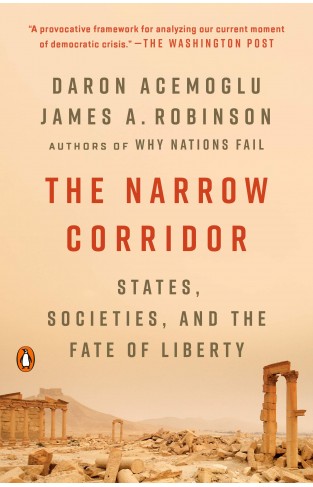
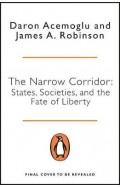
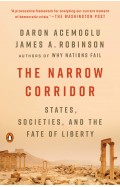
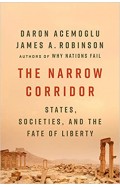
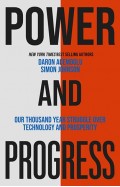
-120x187.jpg?q6)





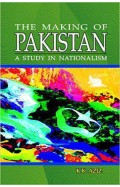


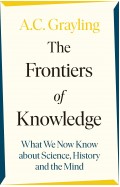
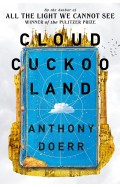
-120x187.jpg?q6)
